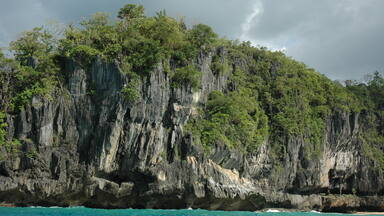Jaeger-LeCoultre brings spotlight on marine World Heritage on Earth Day
UNESCO could not conserve the Crown Jewels of the Ocean without support from public and private partner organizations around the world. In a world that is for 70% oceans, it seems fitting to honor the ocean’s most precious places on Earth Day. This year, we are celebrating Earth Day at a special event hosted in New York City by long-time partner Jaeger-LeCoultre.
“Through this partnership, we want to draw attention to UNESCO and the World Heritage Marine programme and raise awareness of this environmental cause among the public. Six years ago, UNESCO’s World Heritage Marine programme needed a lot of support. Created in 2005, it is a young and ambitious programme that appealed to us because it was quick to get off the ground and deliver real results.” said, Daniel Riedo, Chief Executive Officer of Jaeger-LeCoultre.
Since 2008, Jaeger-LeCoultre has brought critical resources and public awareness to the 47 marine sites on UNESCO’s World Heritage List. Each year, the watch manufacturer pays tribute to one of these special places. This year, Jaeger-LeCoultre is shining a light on Glacier Bay National Park in the United States with a special event at its new boutique in New York.
The event includes a photography exhibition and the release of a short film. The photographs, by Alaskan photographer and modern explorer Mark Kelley, were shot in journalistic style to document both the majesty of Glacier Bay, and the way the landscape and waters are changing with the climate.
Jaeger Le-Coultre likens Glacier Bay to an open-air lab. Designated as a national monument in 1925, and inscribed on the World Heritage List in 1992, it has long been a setting for scientific research and innovative management practices.
The park has designed an innovate initiative that limits the number of cruise ships that can enter each year and uses tourism revenue to help fund research. All vessels have marine biologists on board to help reduce collisions with endangered humpback whales and other marine mammals that are part of the sites’ Outstanding Universal Value.
Respect for the natural world is built into Jaeger-LeCoultre’s DNA. Founded in the beautiful Vallée de Joux, Switzerland, the manufacturer is committed to sustainable construction and transport, as well as energy and water conservation to minimize its impact on the environment. It sources only diamonds and gemstones that satisfy the Kimberley Process standards, ensuring that they do not come from a war zone and that the income from their purchase will not be used to finance any kind of conflict. The leather straps used in its watches all meet the standards set by the Convention on International Trade of Endangered Species (CITES).
Funding from partners like Jaeger-LeCoultre makes a real difference on the ground in marine World Heritage sites around the world. The establishment of new radars in Tubbataha Reefs Natural Park, for example, substantially increased the sites’ capabilities to counter illegal fishing. The World Heritage site was listed in 1993 and is today one of the best conserved coral reef systems in the region. Cocos Island National Park in Costa Rica and Fernando de Noronha in Brazil are both receiving support from Jaeger-LeCoultre to strengthen their capacity in monitoring unsustainable fisheries in their sites. The surface area of marine sites protected under the World Heritage Convention doubled in size over the course of the partnership. The partnership also allowed the development of a managers network across the 47 marine sites. Where previously sites were just a loose collection of exceptional places, they act today as a real community sharing best management solutions and innovative conservation practices across 35 countries.






